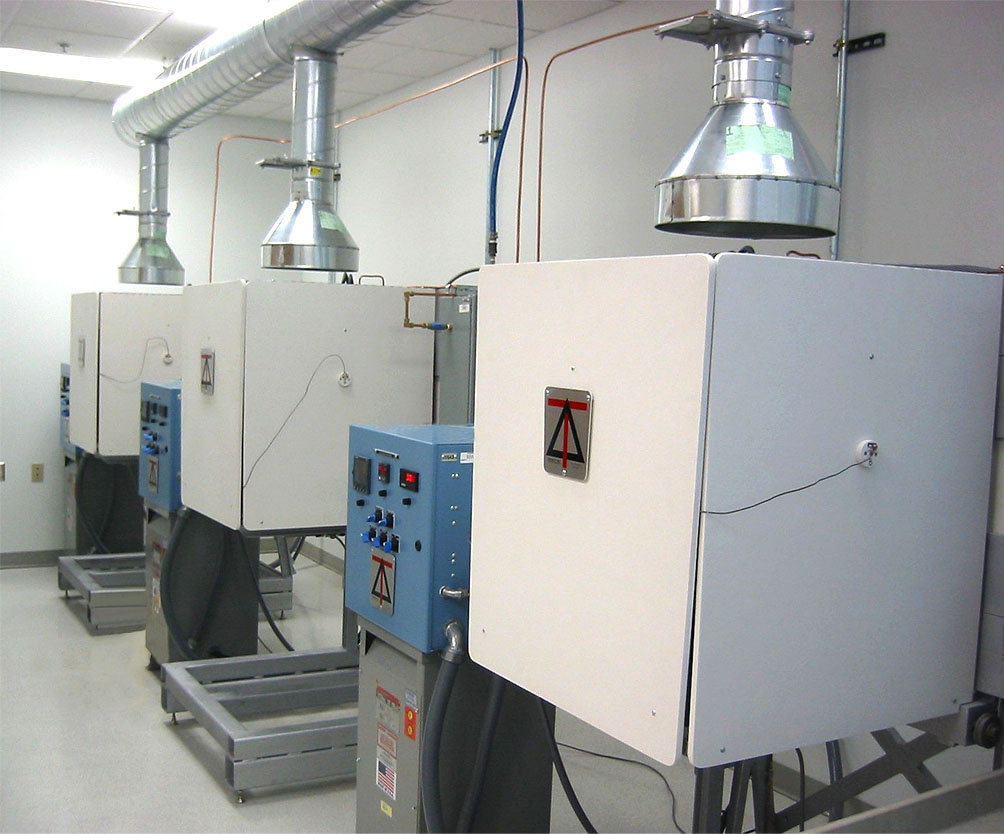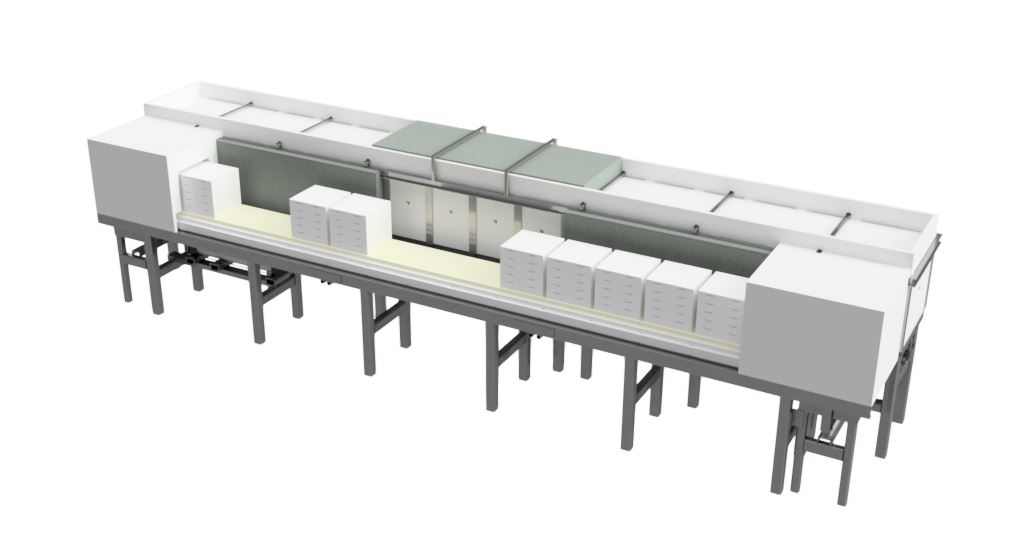
To sign up to receive our emails, fill in the following fields and hit submit. Thanks, and welcome!
"*" indicates required fields

To sign up to receive our emails, fill in the following fields and hit submit. Thanks, and welcome!
"*" indicates required fields

The fundamentals of all furnaces are the same, they aim to heat their contents. Many processes and manufacturing areas require thermal procedures that need industrial furnaces. However, the way these furnaces work can vary greatly between different types of furnaces.
Continuous and batch furnaces both have a place in the manufacturing process. This article will outline some of the key differences between continuous and batch furnaces and the applications that they serve best.
What are Batch Furnaces?
Batch furnaces are closed process machines, meaning they are well-suited to cleanroom standards and inert atmosphere applications. Once the door of a batch furnace is closed, the heating chamber is sealed and no outside entities can enter.
Generally, the operating process of a batch furnace is less complex and easier to maintain. This means that they are less expensive, both initially and over time. However, to use batch furnaces most productively, more work in process is necessary to form groups that are loaded into the oven.
Batch furnaces also require fixtures such as baskets or racks to group parts together within the furnace for thermal processing. This means that the objects being heated must be removed from the production line and grouped for heating, rather than going in automatically.

Are Batch Furnaces More Efficient?
Batch furnaces can be more efficient than continuous furnaces. Because they are not constantly heating, they can achieve a much higher temperature. If the items being processed require a range of temperatures and durations, batch furnaces are more suitable than continuous furnaces. This is because the temperature can be adjusted between each batch. In batch furnaces, the carts or baskets that the items are grouped into must be heated as well, this means that the overall heat load and energy consumption of the furnace increases.
The parts that are closest to the heat source will also be heated faster, meaning that the entire load is not heated equally. This needs to be considered before loading the oven.
Continuous furnaces require a constant temperature that cannot be easily changed. This means that all the items undergoing thermal processing must be heated at the same temperature.
How do Continuous Furnaces Work?
Continuous furnaces are generally more complex than batch furnaces, meaning they are more expensive and require more frequent maintenance. In a continuous furnace, the items travel through the furnace at a constant speed. There is no need for racks or baskets, meaning the overall energy consumption is less than in batch furnaces. The lack of baskets and racks also means that each item is heated individually while moving through the furnace, so there is a constant temperature and no perimeter parts.
The continuous process can also include heated zones and a cooling section at the end of the chamber. Cooling times can be reduced as the elements have space between them and a lower overall thermal mass.
 So, Which is Better?
So, Which is Better?
While there is no clear answer as to which furnace type is better, this article should provide you with the information required to understand which is right for your application.
Batch furnaces are less costly and can be tailored to a specific application such as glass melting. However, continuous furnaces are more efficient at heating a range of products.

Deltech is a family owned small business incorporated in 1968. Members of the Stevenson family are part of the day-to-day operations in management, sales, engineering, and production.
Address:
Deltech Inc.
1007 East 75th Avenue, Unit E
Denver, CO 80229-6442 U.S.A.
© Copyright 1998 -2024 Deltech Furnaces
PRIVACY POLICY | SITE REQUIREMENTS | SITE MAP | INFO FOR EMPLOYEES
Our ongoing accessibility effort works towards being in line with the Web Content Accessibility Guidelines (WCAG) version 2.2, levels A and AA criteria. These guidelines not only help make web content accessible to users with sensory, cognitive, and mobility disabilities but ultimately to all users, regardless of ability.
This website is just part of a meaningful change in making all State of Colorado services inclusive and accessible. We welcome comments on how to improve this website’s accessibility for users with disabilities and for requests for accommodations to any State of Colorado services.